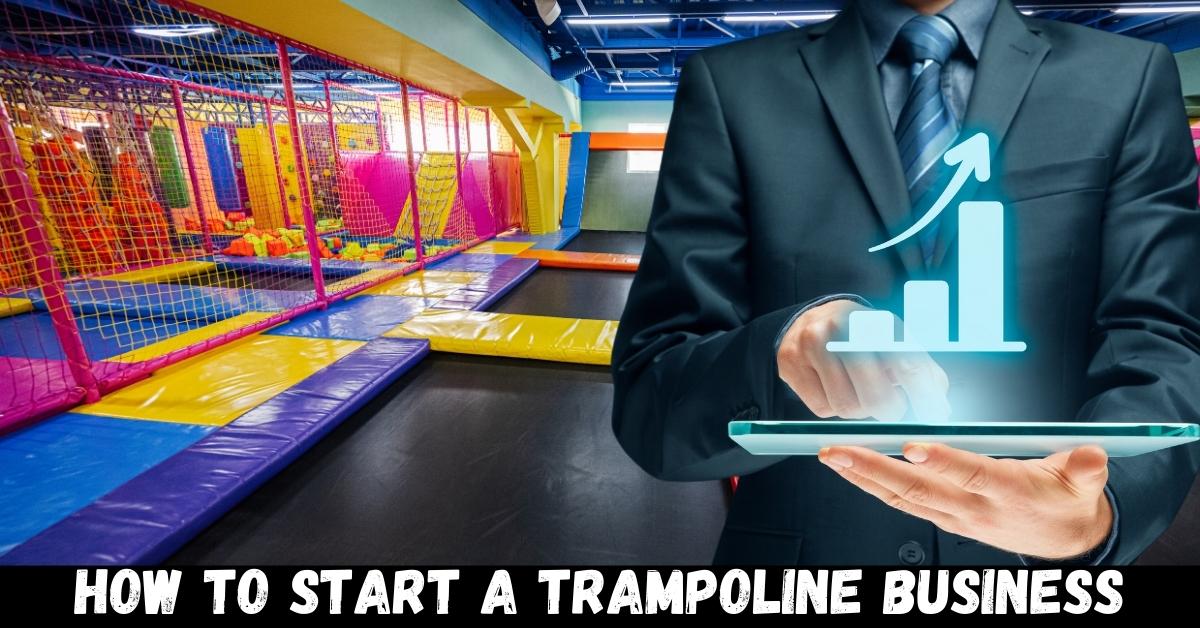Starting a trampoline business can be exciting and rewarding for entrepreneurs looking to tap into the booming entertainment industry. Trampoline parks have gained immense popularity, offering a unique and exhilarating experience for people of all ages.
However, launching and running a successful trampoline business requires careful planning, strategic decision-making, and a strong understanding of the industry.
This guide will explore the essential steps and considerations involved in starting a trampoline business. From conducting market research and identifying the target audience to designing the park layout, securing necessary permits and licenses, and implementing effective marketing strategies, we will provide valuable insights and practical tips to help you navigate the process.
Whether you’re an experienced entrepreneur or a first-time business owner, this guide will serve as a comprehensive resource to help you kickstart your trampoline business and create a fun-filled and safe environment for customers to enjoy.
Let’s dive in and discover how to turn your trampoline business dreams into a reality.
How to start a trampoline business: If you’re looking to start a trampoline business, begin by conducting market research to identify the demand in your area. Develop a business plan that includes location selection, budgeting, and marketing strategies. Obtain the necessary permits and licenses, invest in quality trampolines, and prioritize customer safety to create a successful venture.
How to start a trampoline business? Step-by-Step Guide

Requires careful planning and execution. Here’s a step-by-step guide to help you get started:
Market research for a trampoline park
Market research is a crucial step in starting a successful trampoline park business. You can gather valuable insights about the industry, target audience, and competition by conducting thorough research.
Here are some key aspects to consider when conducting market research for a trampoline park:
Industry Analysis:
Begin by understanding the trampoline park industry landscape in the USA. Identify the current market size, growth trends, and potential opportunities. Research industry reports, trade publications, and online resources to gather relevant data.
Local Market Assessment:
Assess the local market where you plan to establish your trampoline park. Analyze factors such as population demographics, income levels, and recreational preferences. This information will help you gauge the market demand and potential customer base.
Customer Surveys and Focus Groups:
Conduct surveys or organize focus groups to gather direct feedback from potential customers. Ask questions about their preferences, interests, and expectations regarding trampoline parks. This data will help you tailor your offerings to meet their needs.
Competitor Analysis:
Identify existing trampoline parks in your target area and analyze their strengths and weaknesses. Visit their facilities, and evaluate their pricing, services, and customer experience. This analysis will help you understand the competitive landscape and find opportunities for differentiation.
Identifying the target market and demographics

Once you have conducted thorough market research, you must identify your target market and understand its demographics. Consider the following steps:
Age and Gender:
Determine the age range and gender distribution of your target audience. Trampoline parks typically attract a wide range of age groups, including children, teenagers, and adults. However, you may want to focus on a specific age segment to tailor your offerings accordingly.
Interests and Hobbies:
Understand the interests, hobbies, and lifestyle preferences of your target market. Trampoline parks often appeal to individuals who enjoy active and adventurous recreational activities. To refine your target market, identify other related interests such as fitness, sports, or family entertainment.
Geographical Location:
Define the geographical area that comprises your primary target market. Consider factors such as proximity to your trampoline park, accessibility, and transportation options. Assess the population density and demographic characteristics of the surrounding neighborhoods.
Socioeconomic Factors:
Evaluate your target audience’s income levels, spending habits, and disposable income. This information will help you determine pricing strategies and package offerings that align with their financial capacity.
Analyzing competition and differentiating from competitors
Competition in the trampoline park industry can be fierce, so it’s crucial to identify ways to differentiate yourself from competitors. Here are some strategies to consider:
Unique Selling Proposition (USP):
Identify a unique aspect or feature that sets your trampoline park apart. This could include innovative attractions, themed events, specialized programs, or exceptional customer service. Highlight your USP in your marketing materials to attract customers.
Customer Experience:
Focus on providing an outstanding customer experience that exceeds expectations. This includes well-maintained facilities, high safety standards, friendly and knowledgeable staff, and engaging activities. Emphasize the fun and memorable experiences customers can have at your trampoline park.
Pricing and Packages:
Analyze your competitors’ pricing strategies and determine how you can offer competitive pricing while maintaining profitability. Consider offering various packages, such as hourly rates, group discounts, or membership options, to cater to different customer segments.
Marketing and Branding:
Develop a strong brand identity and effective marketing campaigns to create awareness and generate interest. Utilize various channels such as social media, online advertising, local partnerships, and community events to reach your target audience.
Financial Planning

Estimating revenue and profits for a trampoline park
Estimating revenue and profits is a critical aspect of financial planning for a trampoline park. By conducting a thorough analysis, you can gain insights into the potential financial performance of your business.
Here are key considerations when estimating revenue and profits:
Attendance and Capacity: Determine the maximum capacity of your trampoline park based on factors such as the size of the facility and safety regulations. Estimate the average number of visitors per day, taking into account peak and off-peak seasons. This will help you project the revenue generated from ticket sales.
Pricing Strategies: Define your pricing structure, considering factors such as market demand, competitor pricing, and the perceived value of your offerings.
Determine different pricing tiers based on factors like age groups, duration of play, and special packages. Conduct market research and gather customer feedback to validate your pricing strategy.
Ancillary Services: Explore additional revenue streams beyond ticket sales. Consider offering services like party packages, group events, fitness classes, or concessions. These add-on services can significantly contribute to your overall revenue.
Membership and Loyalty Programs: Implement membership options or loyalty programs to incentivize repeat visits and increase customer retention.
Offer benefits such as discounts, exclusive access to special events, or priority booking. Assess the potential revenue generated from membership fees and recurring revenue.
Ancillary Product Sales: Explore the sale of merchandise related to the trampoline park experience, such as branded clothing, accessories, or souvenirs. Calculate the potential revenue from these sales and incorporate them into your overall financial projections.
Determining pricing strategies and ticketing systems

Pricing strategies and ticketing systems play a crucial role in the financial success of a trampoline park. Consider the following factors when determining your pricing strategy:
Competitive Analysis: Research and analyze the pricing strategies of other trampoline parks in your area.
Compare their offerings, ticket prices, and discounts. This will help you position your pricing strategy competitively while considering the unique features and value you offer.
Value Perception: Determine the perceived value of your trampoline park experience. Assess the quality of your facilities, attractions, customer service, and overall experience. Align your pricing with the value customers expect from your park.
Pricing Models: Explore different pricing models, such as hourly rates, session-based pricing, or all-day passes. Each model has its advantages, so consider your target audience and their preferences when making a decision.
Special Packages and Discounts: Consider offering special packages or discounts to attract customers. This can include family packages, group discounts, promotional offers during off-peak hours, or partnership discounts with local businesses.
Online Ticketing Systems: Implement an efficient online ticketing system to streamline the ticketing process and provide convenience to customers. Ensure the system is user-friendly, supports different payment methods, and allows for easy reservation and check-in processes.
Calculating startup and ongoing costs, including equipment, supplies, and insurance
Accurate financial planning requires a comprehensive understanding of the startup and ongoing costs involved in running a trampoline park. Consider the following expenses:
Facility and Equipment: Calculate the cost of leasing or purchasing a suitable facility for your trampoline park. Factor in renovation and customization expenses to create a safe and engaging environment. Estimate the cost of trampolines, safety equipment, and other necessary supplies.
Staffing and Training: Determine the cost of hiring and training staff members, including managers, instructors, customer service representatives, and maintenance personnel. Consider wages, benefits, and ongoing training costs.
Insurance: Consult with insurance providers to determine the cost of liability insurance, property insurance, and workers’ compensation insurance. Ensure you have adequate coverage to protect your business, employees, and customers from potential risks and liabilities.
Marketing and Advertising: Budget for marketing and advertising expenses to promote your trampoline park. This can include online and offline marketing campaigns, website development, social media advertising, print materials, and promotional events. Consider ongoing marketing costs to maintain visibility and attract new customers.
Utilities and Operational Expenses: Estimate monthly utilities such as electricity, water, and internet services. Consider ongoing operational expenses like maintenance, repairs, cleaning supplies, and administrative costs.
Factor in expenses for software systems to manage bookings, reservations, and customer data.
Licenses and Permits: Research and calculate the costs associated with obtaining the necessary licenses and permits to operate a trampoline park in your area. This may include health and safety inspections, fire department permits, zoning permits, and business licenses.
Contingency Fund: Set aside a contingency fund for unexpected expenses or emergencies. It is recommended to allocate a percentage of your total budget for unforeseen circumstances that may arise during the startup or operational phase.
To create a comprehensive financial plan, gather accurate cost estimates from suppliers, service providers, and industry experts.
Create financial projections that consider both short-term and long-term revenue and expenses, allowing you to make informed decisions about pricing, cost management, and potential profitability. Regularly review and adjust your financial plan as your trampoline park business evolves.
Industry Knowledge and Trends

Acquiring a deep understanding of the trampoline park industry is crucial for the success of your business.
By familiarizing yourself with industry dynamics, trends, and best practices, you can make informed decisions and position your trampoline park for growth.
Here are key steps to gain industry knowledge:
Research and Industry Reports: Conduct thorough research on the trampoline park industry. Read industry reports, market studies, and articles to understand the current state, growth potential, and key players in the market. This research will provide insights into market size, customer preferences, and emerging trends.
Networking and Industry Associations: Engage with industry professionals and join trampoline park associations or forums. Attend industry conferences, trade shows, and networking events to connect with experienced individuals who can provide valuable insights and mentorship.
Visit Trampoline Parks: Visit existing trampoline parks in your area or even in different locations to observe their operations firsthand. Observe the layout, attractions, safety measures, customer flow, and overall experience. Learn from their successes and challenges to enhance your own business strategy.
Training and Certifications: Consider attending trampoline park management training programs or obtaining certifications in areas such as safety protocols, risk management, and customer service. These programs will enhance your knowledge and credibility within the industry.
Identifying industry trends and staying up-to-date
Staying abreast of industry trends is crucial for the long-term success of your trampoline park business. By monitoring industry developments, you can adapt your offerings, marketing strategies, and operations to meet evolving customer demands. Here’s how to identify and stay up-to-date with industry trends:
Industry Publications and News: Subscribe to industry publications, blogs, and newsletters to receive regular updates on industry trends, innovations, and best practices. Stay informed about new trampoline park openings, market insights, and consumer preferences.
Social Media and Online Communities: Follow industry influencers, trampoline park associations, and relevant social media groups to stay connected with industry discussions. Engage in conversations, ask questions, and share knowledge with fellow professionals.
Customer Feedback and Surveys: Regularly collect customer feedback to gauge their satisfaction levels, preferences, and expectations. Conduct surveys to gather insights on their experiences and suggestions for improvement. Analyze this data to identify emerging trends and make necessary adjustments.
Technology and Innovation: Keep an eye on technological advancements within the industry. Innovations in attractions, safety equipment, customer management systems, and online booking platforms can enhance your operations and improve the overall customer experience.
Related article: How to Stop Trampoline From Squeaking
Franchise Opportunities Versus Starting an Independent Trampoline Park
When entering the trampoline park industry, you can either start an independent trampoline park or explore franchise opportunities. Consider the following factors when making this decision:
Brand Recognition and Support: Franchising offers the advantage of leveraging an established brand name and reputation. Customers may already be familiar with the franchise, which can help attract initial footfall. Franchisors often provide training, operational support, and marketing assistance.
Business Model and Systems: Franchises typically provide a proven business model with established operational systems, including layout design, attractions, and marketing strategies. This can save time and effort in developing these components from scratch.
Flexibility and Control: Starting an independent trampoline park allows for greater flexibility and control over your business. You have the freedom to design your own brand, attractions, and operational processes according to your vision. You can also adapt to local market conditions more easily.
Costs and Financial Considerations: Franchise opportunities often involve upfront franchise fees and ongoing royalty payments. Independent trampoline parks may require a higher initial investment, but they also allow for direct control over profits and financial decisions without sharing them with a franchisor.
Market Analysis: Conduct a thorough market analysis to determine if there is a demand for a specific franchise in your target location. Assess the level of competition and evaluate whether a franchise or an independent trampoline park would be more viable in that particular market.
Risk and Support: Consider the level of risk you are willing to undertake. Franchises offer a proven business model and support from the franchisor, which can reduce the risk of failure. However, independent trampoline parks allow more creative freedom and differentiation.
Long-Term Goals: Assess your long-term goals and aspirations. Franchises often come with defined growth strategies and expansion opportunities. A franchise may be a suitable option if you are looking for a standardized and scalable business model.
Conversely, an independent venture may be the better choice if you have a unique vision and want to build a trampoline park that reflects your personal brand.
Ultimately, the decision to pursue a franchise or start an independent trampoline park depends on various factors such as your available resources, risk appetite, market conditions, and personal preferences.
Thoroughly evaluate each option, considering the pros and cons, to make an informed decision that aligns with your business goals and vision.
Step-By-Step Guide to Creating a Comprehensive Business Plan
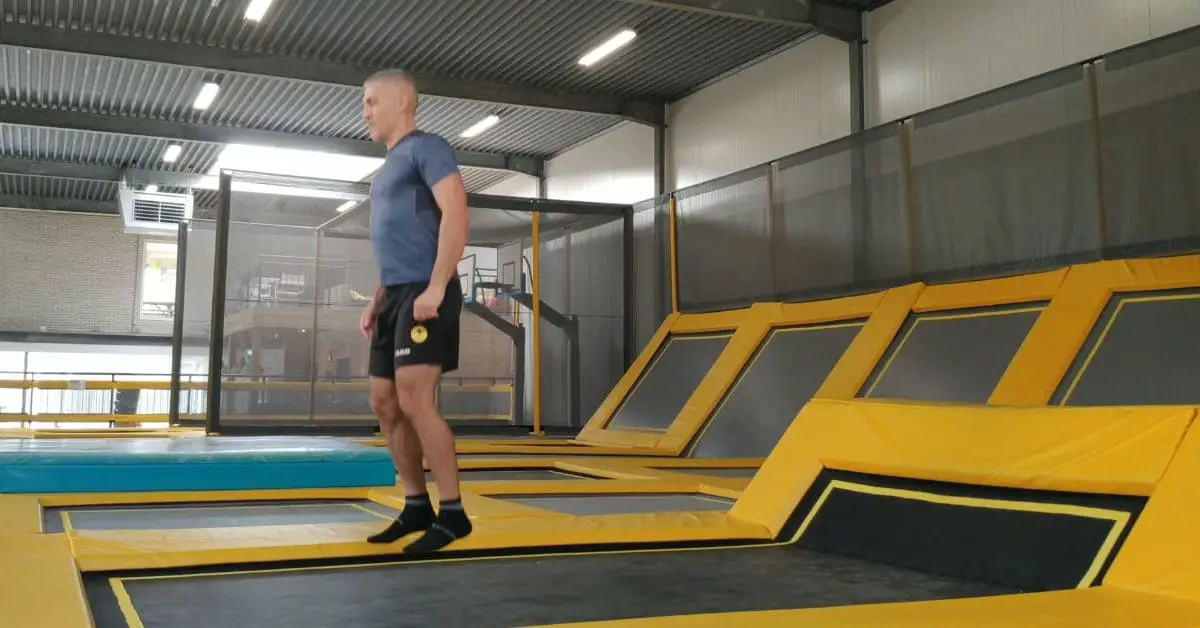
A well-developed business plan is essential for the success of your trampoline park business. It serves as a roadmap, guiding your decisions and operations. Here is a step-by-step guide to creating a comprehensive business plan:
Executive Summary: Start with an executive summary that overviews your trampoline park business. Include a brief description of your business, its mission, and the key highlights of your business plan.
Company Description: Provide detailed information about your trampoline park business. Describe the nature of your business, its legal structure, location, and any unique features or attractions that set it apart.
Market Analysis: Conduct a thorough analysis of the trampoline park industry and your target market. Identify your target audience, and analyze their demographics, preferences, and purchasing behavior. Assess the competition, market trends, and potential growth opportunities.
Organization and Management: Describe the organizational structure of your trampoline park business. Outline the roles and responsibilities of key personnel, including management and staff. Highlight their qualifications and relevant experience.
Products and Services: Detail the attractions, services, and experiences your trampoline park will offer. Explain how they align with customer needs and preferences. Highlight any unique selling points or innovative features that will set your trampoline park apart from competitors.
Marketing and Sales Strategy: Outline your marketing and sales strategies to attract and retain customers. Describe how you will promote your trampoline park, reach your target audience, and build brand awareness. Include pricing strategies, advertising channels, and customer retention initiatives.
Operational Plan: Provide a comprehensive plan covering all aspects of your trampoline park’s day-to-day operations. Include information on facility management, safety protocols, staff training, customer service, and inventory management. Discuss partnerships with suppliers and vendors.
Financial Projections: Develop detailed financial projections for your trampoline park business. Include sales forecasts, estimated expenses, and profitability analysis. Consider startup costs, ongoing operational expenses, and revenue streams. Prepare a cash flow statement and a break-even analysis.
Mission, vision, and Goals of the trampoline park business
Defining a clear mission, vision, and goals for your trampoline park business is essential to establish a strong foundation and guide your decision-making. Here’s how to approach each element:
Mission Statement: Craft a concise mission statement that encapsulates your trampoline park business’s purpose and core values. It should reflect the unique experience and value you aim to provide to your customers.
Vision Statement: Create a compelling vision statement that describes your long-term aspirations and the future you envision for your trampoline park. It should inspire and motivate both your team and customers.
Goals and Objectives: Set specific, measurable, achievable, relevant, and time-bound (SMART) goals for your trampoline park. These goals may include financial targets, customer satisfaction metrics, employee development objectives, and expansion plans.
Values and Culture: Define the values and culture you want to instill in your trampoline park. Identify the behaviors, attitudes, and principles that will guide your interactions with customers and employees. Ensure that your values align with your mission and vision.
Outlining marketing strategies, operational plans, and financial projections
Provide detailed outlines for your marketing strategies, operational plans, and financial projections in the business plan. Here’s what to include:
Marketing Strategies: Describe your marketing strategies to attract and retain customers. Outline your target market segments, marketing channels, promotional campaigns, and customer acquisition tactics. Include a budget for marketing expenses and a timeline for implementation.
Operational Plans: Provide a comprehensive overview of your trampoline park’s operations. Detail your standard operating procedures, facility management processes, safety protocols, and staff training programs.
Explain how you will ensure a seamless customer experience, efficient operations, and adherence to industry regulations.
Financial Projections: Develop detailed financial projections for your trampoline park business. Include projected revenue, expenses, and profitability over a specific period, such as the first three to five years. Consider ticket sales, concession revenue, party bookings, and other potential income streams.
Use historical industry data, market research, and realistic assumptions to estimate costs accurately.
a. Startup Costs: Outline the initial investment required to launch your trampoline park. Include costs for leasing or purchasing a facility, construction or renovation, equipment purchase, marketing and advertising, permits and licenses, insurance, and professional services.
b. Operating Expenses: Estimate ongoing expenses such as rent, utilities, payroll, insurance premiums, maintenance, marketing, and supplies. Consider both fixed and variable costs to ensure a comprehensive financial projection.
c. Pricing Strategies: Define your pricing strategies for different services, such as general admission, birthday parties, group bookings, and special events.
Consider factors such as market demand, competition, and the value you provide to customers. Determine the right balance between affordability and profitability.
d. Break-even Analysis: Conduct a break-even analysis to determine the point at which your trampoline park’s total revenue covers all expenses. This analysis will help you understand the minimum number of customers or sales required to reach profitability.
e. Cash Flow Management: Develop a cash flow projection to monitor the inflow and outflow of funds. This will help you identify potential cash flow gaps and plan for necessary financing or expense adjustments.
f. Profitability Analysis: Assess the profitability of your trampoline park by calculating gross profit margin, net profit margin, return on investment (ROI), and other relevant financial ratios. Evaluate the viability and sustainability of your business model.
Regularly review and update your business plan as your trampoline park business evolves. A well-crafted and continuously updated business plan will serve as a valuable reference document, guiding your operations and helping you navigate challenges and seize opportunities in the dynamic trampoline park industry.
Marketing and Promotion
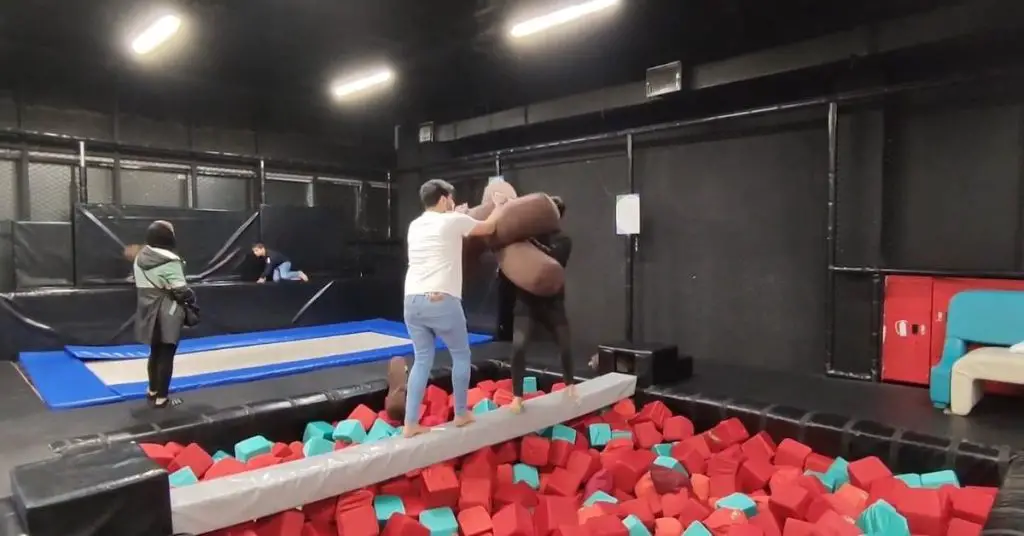
Creating a comprehensive marketing plan is crucial for successfully promoting your trampoline park and attracting a steady flow of customers.
Here are the key steps to developing an effective marketing plan:
Define Your Target Audience: Identify your target market, including families, teenagers, fitness enthusiasts, or event planners. Understand their demographics, preferences, and interests to tailor your marketing messages effectively.
Unique Selling Proposition: Determine your unique selling proposition (USP) that sets your trampoline park apart from competitors. Highlight the key features, experiences, or benefits that make your park irresistible to customers.
Branding and Messaging: Develop a strong brand identity that resonates with your target audience. Create a compelling brand message that communicates the fun, excitement, and safety your trampoline park offers. Consistently use your brand voice and visual elements across all marketing channels.
Online Presence: Establish a robust online presence to reach a wider audience. Build a user-friendly website that showcases your park’s attractions, safety measures, pricing, and upcoming events.
Optimize your website for search engines to improve its visibility. Leverage social media platforms to engage with potential customers, share engaging content, and run targeted advertising campaigns.
Offline Marketing: Don’t neglect traditional marketing channels. Distribute brochures, flyers, and posters to local businesses, schools, and community centers. Collaborate with other local businesses for cross-promotions. Sponsor local events or sports teams to enhance brand visibility.
Content Marketing: Develop valuable and engaging content related to trampoline park experiences, fitness tips, and family entertainment. Create blog posts, videos, and social media content that educates, entertains, and inspires your target audience. Position yourself as an expert in the industry and build trust with your potential customers.
Utilizing online and offline marketing channels
To reach a wider audience, utilizing a mix of online and offline marketing channels is essential. Here are some effective strategies to consider:
Search Engine Optimization (SEO): Optimize your website with relevant keywords, meta tags, and quality content to improve its visibility in search engine results. This will increase organic traffic and attract potential customers who are actively searching for trampoline park experiences.
Pay-Per-Click Advertising (PPC): Invest in targeted online advertising campaigns, such as Google Ads or social media ads, to reach your target audience. Set a budget, define your target demographics and geographic area, and track the performance of your ads to optimize their effectiveness.
Social Media Marketing: Utilize popular social media platforms like Facebook, Instagram, Twitter, and YouTube to engage with your audience. Share captivating visuals, videos, and customer testimonials. Run contests, promotions, or giveaways to create excitement and encourage user-generated content.
Email Marketing: Build an email list of interested customers and implement marketing campaigns. Send newsletters, exclusive promotions, and updates about upcoming events to keep your audience engaged and informed.
Influencer Partnerships: Collaborate with social media influencers, bloggers, or local celebrities who align with your target audience. They can create engaging content, share their experiences at your trampoline park, and reach their followers with your brand message.
Local Partnerships: Forge partnerships with local businesses, schools, sports teams, or community organizations. Offer special discounts or packages to their members, sponsor their events, or collaborate on joint marketing initiatives. This will help expand your reach and tap into your existing customer base.
Leveraging trends and ideas to attract and retain customers
Staying updated with industry trends and implementing innovative ideas can help you attract and retain customers. Consider the following strategies:
Themed Events and Special Programs: Organize themed events like “Superhero Day” or “Glow-in-the-Dark Night” to create a unique and memorable experience for visitors. Offer special programs such as fitness classes, toddler jump sessions, or corporate team-building events to cater to different customer segments.
Loyalty Programs and Referral Incentives: Implement a loyalty program to reward frequent visitors with discounts, freebies, or exclusive access to certain attractions. Encourage customer referrals by offering incentives such as discounted admission or additional perks for every new customer they bring in.
Online Reviews and Testimonials: Encourage satisfied customers to leave positive reviews on platforms like Google, Yelp, or TripAdvisor. Testimonials and word-of-mouth recommendations play a significant role in building trust and attracting new customers.
Collaborations with Influencers: Partner with social media influencers or local celebrities who have a strong following among your target audience. Invite them to experience your trampoline park and share their experiences on their platforms. Their endorsement can significantly increase brand awareness and attract new customers.
Engaging Social Media Content: Create engaging and shareable content on social media platforms to spark interest and interaction. Share user-generated content, behind-the-scenes glimpses, and fun challenges or contests. Encourage customers to tag your park in their posts and use designated hashtags to increase visibility.
Customer Engagement Events: Host special events or workshops that engage and educate customers. For example, you could offer safety workshops, trampoline jumping clinics, or guest appearances by professional athletes or stunt performers.
Community Involvement: Demonstrate your commitment to the community by participating in local events, charities, or sponsorships. This raises brand awareness, builds a positive reputation, and establishes a sense of community support.
Targeted Advertising: Utilize targeted advertising strategies to reach specific customer segments. For example, you can advertise to parents on parenting websites or target fitness enthusiasts through health and wellness publications. This ensures that your marketing efforts reach the right audience with a higher chance of conversion.
Customer Feedback and Continuous Improvement: Regularly collect customer feedback through surveys, suggestion boxes, or online reviews. Use this feedback to identify areas for improvement and enhance the customer experience. Customers appreciate businesses that listen and respond to their needs.
By developing a well-rounded marketing plan, utilizing online and offline channels effectively, and leveraging industry trends and innovative ideas, you can attract and retain a loyal customer base for your trampoline park.
Stay adaptable and continuously monitor the effectiveness of your marketing strategies, making adjustments as necessary to drive business growth and success.
Legal and Regulatory Considerations

Before launching a trampoline park, it’s crucial to have a comprehensive understanding of the legal aspects involved.
This ensures compliance with applicable laws and regulations and helps mitigate potential risks. Consider the following key legal considerations:
Business Structure: Determine the most suitable business structure for your trampoline park, such as a sole proprietorship, partnership, limited liability company (LLC), or corporation.
Consult with a legal professional or business advisor to understand the implications of each structure in terms of liability, taxation, and ownership.
Business Registration: Register your trampoline park as a legal entity with the appropriate government agencies. This typically involves filing necessary documents with the state’s Secretary of State office, such as Articles of Incorporation or Articles of Organization. Ensure compliance with local, state, and federal requirements for business registration.
Contracts and Liability Waivers: Develop comprehensive contracts and liability waivers that outline the terms and conditions of using your trampoline park.
These legal documents help protect your business from potential lawsuits and outline the responsibilities of customers in terms of safety, injury risks, and assumption of liability.
Registering the business name and obtaining the necessary licenses
To establish your trampoline park as a legitimate and compliant business, follow these steps:
Business Name Registration: Choose a unique and memorable name for your trampoline park and check its availability with the Secretary of State or a similar agency in your state. Register your business name to secure the right to use it and prevent others from operating under the same name.
Permits and Licenses: Identify the permits and licenses required to operate a trampoline park in your jurisdiction. These may include amusement park permits, health and safety inspections, fire code compliance, zoning permits, and special licenses for serving food or beverages. Contact local government agencies or consult with an attorney to ensure you meet all legal requirements.
Employment Compliance: If you plan to hire employees, understand and comply with federal and state employment laws, including minimum wage requirements, worker’s compensation, payroll taxes, and anti-discrimination laws.
Establish appropriate payroll, employee benefits, and record-keeping systems to ensure compliance with employment regulations.
Securing insurance coverage and complying with safety regulations
Insurance and safety regulations are critical for protecting your trampoline park business and ensuring the well-being of your customers. Consider the following aspects:
Liability Insurance: Obtain comprehensive liability insurance coverage specifically tailored for trampoline parks. This insurance should protect your business from claims related to injuries, property damage, and accidents that may occur on your premises.
Consult with an insurance professional to determine the appropriate coverage limits based on your specific needs.
Safety Measures: Implement robust safety protocols and procedures to minimize the risk of accidents and injuries. This includes regular equipment maintenance, safety inspections, employee training on safe operation and supervision, and implementing rules and signage that promote safe usage of the trampoline park facilities.
Compliance with Safety Standards: Familiarize yourself with industry-specific safety standards and guidelines, such as those provided by the International Association of Trampoline Parks (IATP).
Stay updated on any changes or new recommendations in trampoline park safety, and ensure that your park adheres to these standards.
Ongoing Risk Management: Regularly assess and address potential risks and hazards within your trampoline park. This includes monitoring equipment functionality, conducting routine safety checks, and promptly addressing any maintenance or repair needs. Maintained accurate records of safety inspections and incident reports.
Consult with legal professionals, insurance advisors, and industry experts to ensure your trampoline park meets all legal requirements, complies with safety regulations, and mitigates potential risks.
By prioritizing legal and regulatory considerations, you can operate your trampoline park with confidence and peace.
Designing the Trampoline Park
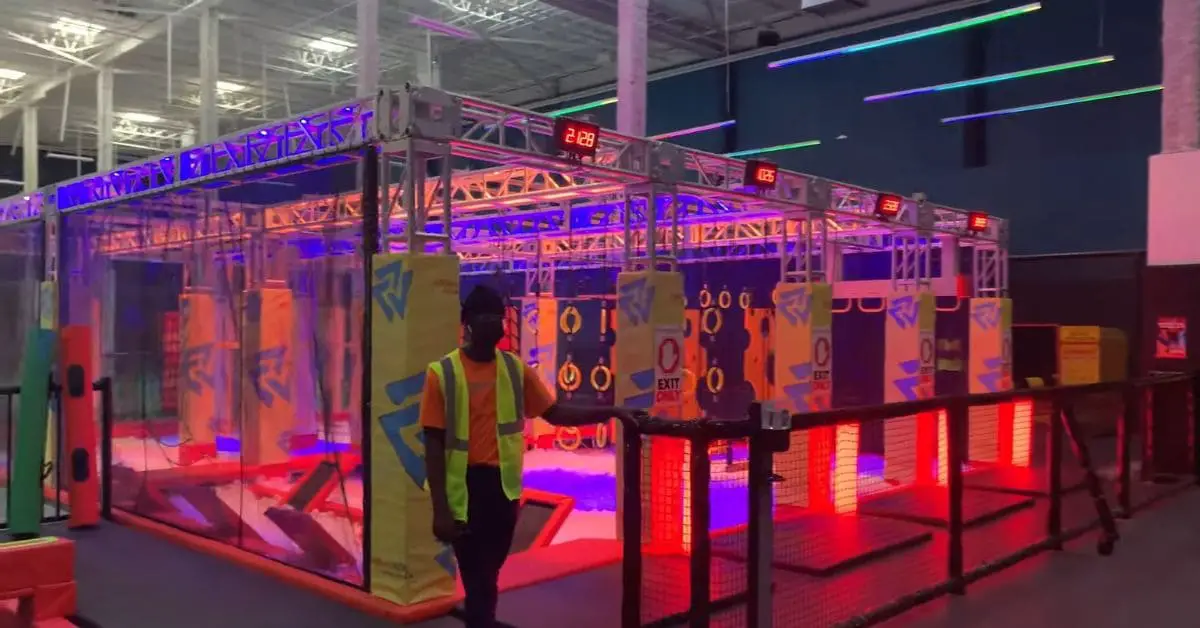
Choosing the right location for your trampoline park is critical to its success. Consider the following aspects when identifying the ideal location:
Demographics and Accessibility: Analyze the area’s demographics, including population density, age groups, and income levels. Look for locations with a significant number of families, teenagers, and young adults who are likely to be your target audience.
Ensure the location is easily accessible, preferably near residential areas or major transportation routes.
Space Requirements: Assess the space requirements based on the size and scope of your trampoline park. Ideally, you’ll need a spacious facility with high ceilings to accommodate various attractions and ensure safe jumping.
Take into account the minimum recommended dimensions for different trampoline areas, such as open jump zones, foam pits, dodgeball courts, and party rooms.
Zoning and Regulations: Verify that the selected location complies with zoning regulations and permits the operation of a trampoline park. Check with local authorities to understand any specific requirements or restrictions related to the business.
Working with trampoline park manufacturers and suppliers
Collaborating with reputable trampoline park manufacturers and suppliers is crucial to ensure the quality and safety of your park’s equipment. Consider the following steps:
Research and Evaluate Manufacturers: Research various trampoline park manufacturers and suppliers to find reputable companies with a proven track record.
Look for manufacturers that prioritize safety, durability, and compliance with industry standards. Review customer testimonials and visit existing trampoline parks to assess the quality of their equipment.
Customization and Design Services: Engage with manufacturers that offer customization and design services to create a unique and appealing trampoline park.
Collaborate closely with their team to design the layout, select appropriate attractions, and incorporate your branding elements into the park’s aesthetics.
Safety and Compliance: Ensure that the equipment and attractions provided by the manufacturer meet or exceed industry safety standards, such as those set by the International Association of Trampoline Parks (IATP) or the American Society for Testing and Materials (ASTM). Verify that the manufacturer follows rigorous quality control processes and provides product warranties.
Supplier Relationships: Establish strong relationships with suppliers not only for initial equipment purchases but also for ongoing maintenance, repair, and replacement needs.
Regularly communicate with them to stay updated on new developments in trampoline park equipment and ensure timely servicing of your attractions.
Planning the layout and attractions to enhance customer experience
Designing the layout and selecting appropriate attractions creates an engaging and enjoyable customer experience. Consider the following aspects when planning the trampoline park layout:
Flow and Safety: Arrange the trampoline areas to ensure a smooth flow of customers, minimizing congestion and collision risks. Separate different zones based on age groups or activity types to cater to a diverse range of visitors.
Place safety signage, instructions, and designated staff members to supervise and enforce safety rules.
Variety of Attractions: Offer diverse attractions to cater to different preferences and skill levels. This may include open jump zones, foam pits, basketball slam dunk areas, dodgeball courts, obstacle courses, climbing walls, or ninja warrior courses.
Consider the space available and ensure that each attraction is appropriately sized and positioned for safe usage.
Theme and Aesthetics: Incorporate a cohesive theme or concept into the trampoline park’s design to create an immersive and memorable experience for visitors.
Align the choice of colors, signage, and decor with your brand identity and target audience preferences. Use engaging graphics and visual elements to enhance the overall ambiance and appeal of the park.
Comfort and Amenities: Provide comfortable seating areas, designated party rooms, and clean restroom facilities for visitors. Consider installing lockers or storage areas where guests can safely store their belongings while enjoying the park.
Additionally, ensure proper ventilation and temperature control within the facility to maintain a pleasant environment for both participants and spectators.
Accessibility and Safety Measures: Design the layout to be inclusive and accessible for individuals with disabilities. Incorporate ramps, wide walkways, and accessible equipment to ensure that everyone can enjoy the park.
Implement robust safety measures such as padding, netting, and secure fencing around trampoline areas to prevent accidents and injuries.
Clearly mark emergency exits and equip your facility with first aid kits and automated external defibrillators (AEDs) to address any medical emergencies.
Flow and Customer Experience: Optimize the layout to enhance the customer experience and promote engagement. Consider the natural flow of customers throughout the park and strategically position attractions and seating areas to encourage interaction and socialization.
Incorporate waiting areas with interactive games or entertainment options to ensure an enjoyable experience for guests during peak times.
Continuous Improvement: Regularly assess the performance and popularity of attractions within your trampoline park. Seek customer feedback to identify areas for improvement and gauge satisfaction levels.
Stay updated on emerging trends and innovations in the industry to incorporate new attractions or modify existing ones to meet changing customer preferences.
You can create a trampoline park that attracts and delights visitors by carefully planning the location, collaborating with reputable manufacturers, and designing a layout that prioritizes safety, variety, and customer experience.
Regularly evaluate and adapt your park’s design to meet evolving customer expectations and maintain a competitive edge in the market.
Launching and Growing the Business
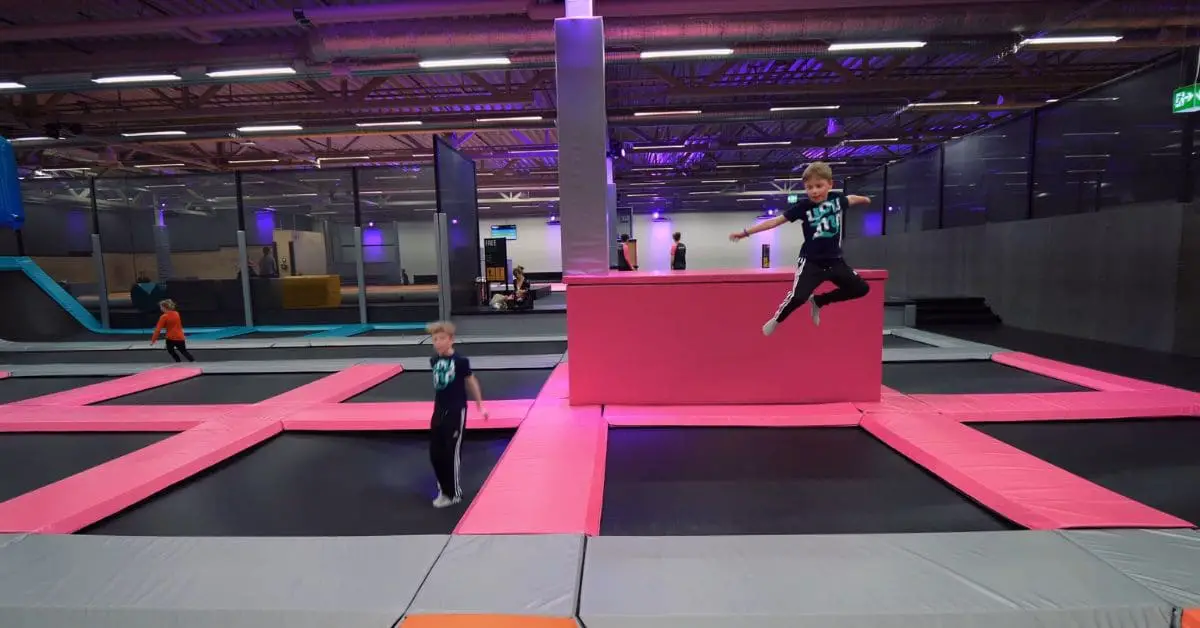
Launching and growing a business requires careful planning, strategic thinking, and consistent execution. Here are some key steps to consider when launching and growing your business:
Executing the launch of the trampoline park business
Launching your trampoline park business requires careful planning and execution to create a strong foundation for success. Consider the following steps to ensure a successful launch:
Grand Opening Event: Plan a memorable grand opening event to generate buzz and attract the local community. Offer special discounts, promotions, or freebies to encourage attendance. Leverage social media, local advertising, and community outreach to spread the word about the launch.
Media and Public Relations: Reach out to local media outlets, such as newspapers, TV stations, and online publications, to secure coverage of your trampoline park.
Send out press releases highlighting the unique aspects of your park, safety features, and the positive impact it will have on the community. Consider hosting media tours or inviting influencers to experience and promote your park.
Online Presence: Develop a strong online presence through a well-designed website and active social media channels. Create engaging content, share updates about special events or promotions, and interact with your audience. Encourage customers to leave reviews and testimonials to build credibility and attract more visitors.
Collaborations and Partnerships: Seek partnerships with local businesses and organizations to cross-promote your trampoline park. Explore collaborations with schools, youth groups, sports teams, and event organizers to offer special packages or joint marketing initiatives. This helps expand your reach and tap into existing customer networks.
Strategies for customer acquisition and retention
Acquiring and retaining customers is vital for the long-term success of your trampoline park. Implement the following strategies to attract and keep customers engaged:
Targeted Marketing Campaigns: Develop targeted marketing campaigns to reach your ideal customer demographic. Utilize online advertising platforms, such as Google Ads and social media ads, to reach a wider audience.
Leverage email marketing to communicate directly with existing customers and offer exclusive promotions or loyalty rewards.
Referral Programs: Encourage satisfied customers to refer their friends and family by implementing a referral program. Offer incentives such as discounted admission, free jump time, or merchandise for each successful referral. This not only brings in new customers but also strengthens customer loyalty.
Special Events and Promotions: Organize special events, themed nights, or holiday promotions to attract diverse customers. Consider hosting birthday parties, group events, corporate team-building activities, or fundraising initiatives.
Collaborate with local organizations, schools, and charities to create mutually beneficial partnerships.
Customer Engagement and Loyalty: Focus on providing exceptional customer service and creating a positive experience for every visitor. Train your staff to be friendly, knowledgeable, and attentive. Implement a customer loyalty program that offers rewards, discounts, or exclusive access to special events for repeat visitors.
Implementing effective accounting systems and hiring qualified employees
Effective financial management and hiring the right employees are essential for your trampoline park business’s smooth operation and growth. Consider the following:
Accounting Systems: Implement reliable accounting software to streamline financial processes, track revenue and expenses, and generate accurate reports. Hire or consult with an experienced accountant to ensure compliance with tax regulations, manage cash flow, and make informed financial decisions.
Staffing Needs: Determine the staffing requirements based on the size and operation of your trampoline park. Hire qualified and enthusiastic employees who are passionate about customer service and safety.
Provide thorough training on park rules, emergency procedures, and equipment usage. Foster a positive work environment that promotes teamwork and employee satisfaction.
Continuous Training and Development: Invest in ongoing training and development programs for your employees to enhance their skills and knowledge. Provide regular updates on safety protocols, industry trends, and customer service best practices. Encourage employees to share their ideas and feedback, fostering a culture of continuous improvement.
Staff Supervision and Performance Evaluation: Implement a system for supervising and evaluating employee performance. Set clear expectations and goals, and provide regular feedback to ensure employees meet standards and deliver excellent customer service. Recognize and reward outstanding performance to motivate and retain talented staff members.
Employee Retention and Growth Opportunities: Develop strategies to retain top-performing employees and create opportunities for career growth within your trampoline park.
Offer competitive wages, employee benefits, and incentives to foster loyalty and commitment. Provide opportunities for advancement and additional responsibilities as your business expands.
Safety Training and Compliance: Prioritize safety by providing comprehensive employee training programs. Ensure that they understand and adhere to safety protocols and procedures. Stay up-to-date with industry safety standards and regulations to maintain a safe environment for both employees and customers.
Customer Feedback and Satisfaction: Regularly collect and analyze customer feedback to identify areas for improvement. Encourage customers to leave reviews and ratings on online platforms. Address any concerns or issues promptly and proactively enhance the customer experience based on feedback received.
Launching and growing a trampoline park business requires a strategic approach to marketing, customer acquisition, financial management, and employee development.
By executing a successful launch, implementing effective customer acquisition and retention strategies, and ensuring the right accounting systems and qualified employees are in place, you can establish a strong foundation for the growth and success of your trampoline park.
Continuously evaluate and adapt your strategies to meet changing customer demands, industry trends, and market conditions.
Financial Considerations and Resources

Starting a trampoline park requires a thorough understanding of the financial aspects involved. Estimating the total cost involves considering various factors:
Location and Real Estate: The cost of securing a suitable location for your trampoline park can vary significantly depending on the size, location, and local market conditions. Consider leasing or purchasing commercial space that meets your requirements for size, accessibility, and zoning regulations.
Facility Construction and Renovation: Building or renovating the trampoline park facility to meet safety standards and accommodate the desired attractions and amenities incurs costs. This includes construction materials, labor, permits, and architectural designs.
Equipment and Supplies: Trampoline park equipment, including trampolines, foam pits, safety pads, and climbing walls, is a significant expense. Research reputable manufacturers or suppliers to ensure the quality and safety of the equipment.
Operational Expenses: Factor in ongoing operational costs such as utilities, insurance, maintenance, marketing, staffing, and administrative expenses. Consider expenses related to licenses and permits, accounting software, and professional services like legal and accounting fees.
Assessing the potential profitability of a trampoline park business
Determining the potential profitability of your trampoline park business is crucial to understanding its financial viability. Consider the following factors:
Revenue Streams: Identify and estimate the various revenue streams available in a trampoline park business. These can include admission fees, party packages, group bookings, merchandise sales, and concessions.
Pricing Strategies: Determine competitive and profitable pricing strategies for different customer segments. Conduct market research to understand the pricing norms in your area and consider value-added packages or memberships to increase customer loyalty.
Operating Expenses: Analyze the fixed and variable expenses of running a trampoline park. These include rent or mortgage payments, utilities, employee wages, insurance premiums, equipment maintenance, and marketing expenses. Proper budgeting and cost control measures are essential to maintain profitability.
Seasonality and Demand Fluctuations: Take into account the seasonal nature of the trampoline park business and anticipate fluctuations in demand during holidays, weekends, and school breaks.
Adjust pricing and promotional strategies accordingly to maximize revenue during peak periods and maintain consistent income throughout the year.
Market Analysis and Competition: Conduct a comprehensive market analysis to understand your area’s competitive landscape, customer preferences, and market demand for trampoline parks.
Identify unique selling points and develop strategies to differentiate yourself from competitors and attract a loyal customer base.
Exploring grants and financing options for trampoline park startups
Securing adequate funding is essential for starting a trampoline park. Explore the following options:
Small Business Administration (SBA) Loans: The U.S. Small Business Administration offers various loan programs, including 7(a) loans, which can provide funding for eligible businesses. These loans often have favorable terms and interest rates.
Traditional Bank Loans: Approach local banks or financial institutions for business loans. Prepare a comprehensive business plan, financial projections, and collateral to support your loan application.
Grants and Economic Development Programs: Research grants and economic development programs are offered by federal, state, and local government entities, as well as private organizations. These grants may provide financial assistance or support specific entrepreneurship or community development initiatives.
Angel Investors and Venture Capital: Explore opportunities to attract investors or venture capital firms interested in investing in the trampoline park industry. Prepare a compelling business plan and be prepared to negotiate terms and share ownership.
Crowdfunding: Consider utilizing crowdfunding platforms to raise capital from many individual investors. Craft a compelling campaign showcasing your trampoline park’s unique aspects and the potential for growth and profitability.
Personal Savings and Family/Friends: Consider using personal savings or seeking financial support from family and friends. This approach allows you to retain control over the business and potentially negotiate flexible repayment terms.
Equipment Leasing or Financing: Explore leasing options or financing arrangements specifically designed for trampoline park equipment. This can help reduce upfront costs and spread payments over time.
Franchise Opportunities: If you’re interested in operating a trampoline park as a franchise, investigate the opportunities established trampoline park brands offer. Franchising provides access to a proven business model and support from the franchisor regarding financing options and operational guidance.
Partnerships and Joint Ventures: Explore potential partnerships with investors or businesses that align with your trampoline park concept. This can help share the financial burden and tap into additional resources and expertise.
Personal Investment and Bootstrapping: Consider investing your funds into the trampoline park business or adopting a bootstrapping approach where you gradually reinvest profits back into the business for expansion and growth.
When exploring grants and financing options, research and evaluate each opportunity thoroughly. Be prepared to present a solid business plan, financial projections, and a clear vision for the trampoline park.
Additionally, maintain good financial management practices, including accurate bookkeeping, regular financial analysis, and cost control measures, to ensure the long-term financial success of your trampoline park business.
By carefully estimating the total cost to start a trampoline park, assessing potential profitability, and exploring various financing options, you can develop a comprehensive financial plan that sets the stage for a successful and sustainable trampoline park business.
How much do trampoline park owners make

The profitability of a trampoline park can vary depending on various factors such as location, size, market demand, operating expenses, and management efficiency.
While it is challenging to provide an exact figure, trampoline park owners have the potential to generate a profitable income if the business is well-managed and attracts a steady flow of customers.
To determine the potential earnings of a trampoline park owner, it is essential to consider the following:
Revenue Streams: Trampoline parks generate revenue through various sources, including admission fees, party bookings, group events, concessions, merchandise sales, and additional services such as fitness classes or special events. The pricing strategy and the ability to attract a consistent customer base will significantly impact the revenue potential.
Operating Expenses: Owners must carefully manage operational costs to maximize profitability. These expenses include rent or mortgage payments, utilities, insurance, payroll, maintenance, marketing, and other overhead costs.
Controlling these expenses while maintaining high-quality facilities and services is crucial for profitability.
Market Demand and Competition: The level of market demand and competition in a specific area can influence the earnings of a trampoline park owner. An area with high population density, limited competition, and strong demand for recreational activities can potentially yield higher profits.
Seasonality and Peak Periods: Trampoline parks often experience fluctuations in customer traffic due to seasonality and peak periods. School holidays, weekends, and vacations tend to attract higher attendance.
Effective marketing strategies and special promotions during slower periods can help balance revenue throughout the year.
Business Efficiency and Management: The efficiency and effectiveness of operations play a vital role in determining the profitability of a trampoline park.
Well-managed facilities with streamlined processes, excellent customer service, and strategic marketing initiatives have a higher chance of generating consistent revenue and repeat business.
It is recommended to conduct thorough market research, develop a detailed business plan, and consult with industry professionals to gain a better understanding of the potential earnings specific to your location and business model.
By accurately estimating revenues, controlling expenses, and continuously improving operations, trampoline park owners can aim to achieve a profitable and successful venture.
Trampoline Park Startup Costs
It’s essential to conduct thorough research and create a detailed business plan to determine the specific costs for your trampoline park venture. Here is an example of the detailed costs involved:
Franchise Fee: $50,000 to $60,000. This fee may apply if you operate as a franchisee of an established trampoline park brand.
Lease and Deposits: $21,000 to $50,000. This includes the cost of leasing a suitable space for your trampoline park and any necessary deposits.
Building Improvements: $450,000 to $600,000. This covers renovating or constructing the trampoline park facility, including layout modifications, safety enhancements, and aesthetic improvements.
Signage: $30,000 to $33,000. This includes the cost of exterior and interior signage to promote your trampoline park and create a visually appealing atmosphere.
Furniture: $23,000 to $30,000. This covers purchasing furniture, including seating, tables, reception desks, and other items for customer comfort and convenience.
Equipment & Supplies: $123,000 to $124,000. This includes the cost of trampolines, safety padding, foam pits, obstacle courses, electronic systems, cleaning equipment, and other supplies required to operate the trampoline park.
Licenses, Utilities, etc.: $3,000 to $6,000. This includes the cost of obtaining necessary licenses, permits, registrations, and utility connection fees.
Inventory: $25,000. This includes initial inventory for concessions, such as food and beverages or merchandise.
Professional Fees: $4,000 to $12,000. This may include legal, accounting, consulting, or other professional assistance fees.
Insurance Deposit: $15,000. This includes the upfront deposit for liability insurance coverage to protect your business and customers.
Pre-opening salaries, etc.: $28,000 to $33,000. This covers the cost of salaries, training, and other expenses associated with hiring and preparing staff before the grand opening.
Three-Month Operating Costs: $40,000 to $80,000. This includes estimated expenses for rent, utilities, payroll, marketing, maintenance, and other operational costs during the initial three months of operation.
Advertising: $25,000+. This covers the cost of promotional activities, marketing campaigns, and advertising efforts to create awareness and attract customers to your trampoline park. The actual amount spent on advertising can vary based on your marketing strategy and objectives.
Conducting a comprehensive cost analysis specific to your trampoline park project is crucial, considering factors such as local market conditions, competition, and your business goals.
Consider seeking advice from industry experts, consulting with financial professionals, and conducting thorough market research to ensure accurate cost estimations and financial planning for your trampoline park venture.
Trampoline park equipment
Trampoline parks offer a thrilling and entertaining experience for visitors of all ages. To create an exciting and safe environment, investing in high-quality trampoline park equipment is crucial. Here are some essential trampoline park equipment types and their details:
Trampolines:
Trampolines are the centerpiece of any trampoline park. They come in various shapes and sizes, including rectangular, circular, and square. The frames are typically made of sturdy steel and feature high-tension springs or bungee cords for maximum bounce.
The jumping surface is durable, UV-resistant polypropylene material that provides excellent traction.
Safety Padding:
Safety padding is essential to cover the steel frames and springs of trampolines, preventing users from coming into direct contact with these hard surfaces. The padding is typically made of thick foam and covered with PVC or vinyl material. It should securely attach to the trampoline frame to ensure a safe bouncing experience.
Foam Pits:
Foam pits are popular attractions in trampoline parks, providing a soft landing for jumpers. They consist of a pit filled with foam cubes that allow users to perform tricks and jumps with added safety. The foam cubes are designed to withstand repeated impact and provide cushioning.
Airbags:
Airbags are inflatable landing zones positioned strategically around the trampolines and other attractions. They provide a soft and cushioned landing surface, reducing the risk of injury. Airbags are typically made of durable PVC material and are inflated using blowers.
Ninja Courses:
Ninja courses are obstacle courses that combine climbing, jumping, and balancing elements. They typically include various challenging features like cargo nets, swinging ropes, monkey bars, balance beams, and hanging obstacles. Ninja courses offer visitors a fun and interactive experience, testing their agility and strength.
Slam Dunk Zones:
These zones consist of basketball hoops positioned at varying heights, allowing visitors to practice their basketball skills while bouncing on trampolines. The hoops are often adjustable to accommodate different age groups and skill levels.
Dodgeball Courts:
Trampoline park dodgeball courts provide a unique twist to the classic game. The courts feature multiple trampolines divided into two sections, creating an exciting and dynamic playing field. The trampoline surface adds an element of height and bounce, making the game more challenging and entertaining.
Climbing Walls:
Trampoline park climbing walls are vertical structures with climbing holds or grips. They offer visitors a safe and controlled environment to test their climbing skills and agility. The climbing walls are often made of durable materials such as plywood or fiberglass, with textured surfaces for grip.
Battle Beams:
Battle beams are narrow beams positioned over foam pits or airbags, where visitors can engage in friendly combat. Participants use foam-padded jousting sticks or padded gloves to challenge each other’s balance and strength while trying to knock their opponents off the beam.
Rope Swings and Tarzan Swings:
These attractions simulate swinging from ropes or vines, allowing visitors to experience a thrilling sensation like swinging through the jungle. They are typically positioned above foam pits or airbags for a safe landing.
Interactive Games:
Trampoline parks often feature interactive games projected onto trampoline surfaces. These games include virtual dodgeball, interactive light displays, and target-based challenges, adding a unique and engaging element to the park experience.
When selecting trampoline park equipment, it’s essential to prioritize safety, durability, and compliance with industry standards. Regular inspections, maintenance, and adherence to safety guidelines are crucial to ensure the longevity and safe operation of the equipment.
Investing in high-quality trampoline park equipment can create an enjoyable and memorable experience for visitors while maintaining a safe environment.
Trampoline park insurance cost

Trampoline parks in America usually pay an average of $300 to $800 annually to get general liability insurance coverage worth $1 million. This insurance helps protect them if customers get hurt or their property gets damaged while using the trampoline park.
However, the cost of your insurance policy can be influenced by different factors.
One important factor is the size of your trampoline park. Bigger parks with more trampolines may have higher insurance costs because of a greater risk of accidents. The location of your park also matters.
If you’re in an area with more insurance claims or where accidents are more likely to occur, your insurance cost may be higher. The specific activities you offer at your park can also affect the price. Your insurance premium may increase if you have additional features like foam pits or climbing walls.
Remember, these factors can vary for each trampoline park, so getting a personalized quote from an insurance provider is important to know the exact cost for your specific situation.
Related articles:15 Best Trampoline Parks in the World
Trampoline Business Franchise
Operating a trampoline business franchise can be an exciting opportunity. Franchising allows you to leverage an established brand, business model, and support system while starting your own trampoline park.
Here are some key points to consider when exploring a trampoline business franchise:
Research Franchise Options: Begin by researching various trampoline business franchise opportunities. Look for reputable and well-established franchises with a track record of success.
Evaluate the franchise’s reputation, financial stability, training and support programs, and overall business model.
Understand Franchise Costs: Franchises typically require an initial franchise fee, which can range from several thousand dollars to hundreds of thousands of dollars, depending on the brand and scale of the trampoline park. Additionally, you may need to budget for ongoing royalty fees and marketing expenses.
Review Franchise Agreement: Carefully review the franchise agreement, which outlines the terms and conditions of the franchise relationship. Pay attention to factors such as territory exclusivity, length of the agreement, renewal options, and any restrictions on operations or expansion.
Training and Support: One of the advantages of franchising is access to training and support. Evaluate the level of training the franchisor provides, including initial training for setting up the business and ongoing support for operations, marketing, and staff management.
Site Selection and Design: Work closely with the franchisor to identify suitable locations for your trampoline park. They may provide guidance based on their experience and market research.
Additionally, consider the park layout, safety measures, and aesthetic appeal when designing the trampoline park.
Marketing and Branding: Leverage the franchisor’s marketing resources and brand recognition to promote your trampoline park. Ensure you understand the marketing support provided by the franchise and explore local marketing strategies to attract customers to your specific location.
Comply with Franchise Standards: Follow the franchise’s operational standards and guidelines to maintain consistency and quality across the franchise network. This includes adhering to safety protocols, maintaining equipment, and delivering a positive customer experience.
Remember, each franchise opportunity may have unique requirements and considerations. It’s important to conduct thorough research, seek legal and financial advice, and communicate with current franchisees to gain insights and make an informed decision before entering into a trampoline business franchise.
FAQs:
Q.1 How do I start a trampoline business?
Starting a trampoline business involves several key steps. Begin with market research and a solid business plan. Secure funding, find a suitable location, acquire the necessary permits and licenses, and invest in quality trampoline equipment.
Train staff, develop safety protocols, and create a marketing strategy to attract customers.
Q.2 What are the startup costs for opening a trampoline park?
Trampoline park startup costs can vary depending on factors like location, park size, equipment selection, and facility customization.
Expenses typically include real estate, trampolines and related equipment, safety features, insurance, marketing, staff wages, and administrative costs. Conducting a detailed financial analysis to determine your specific startup costs is crucial.
Q.3 What types of equipment are needed for a trampoline park?
Trampoline parks require various equipment to create an engaging experience for visitors. This typically includes trampolines of different types (including foam pits and dodgeball courts), safety padding, enclosures, climbing walls, ninja courses, interactive games, party rooms, and seating areas.
It’s important to choose high-quality, durable equipment from reputable suppliers.
Q.4 How much does insurance for a trampoline park cost?
The insurance cost for a trampoline park can vary depending on factors like park size, location, number of trampolines, additional activities offered, and coverage limits.
Common insurance types include general liability, property insurance, and workers’ compensation. Working with an experienced insurance broker to customize your policy is advisable for accurate cost estimates.
Q.5 Can I franchise a trampoline business?
Yes, franchising can be an option for starting a trampoline business. Franchising offers the opportunity to leverage an established brand, proven business model, and ongoing support.
Research reputable trampoline business franchises, and evaluate their terms, initial investment requirements, training, and ongoing support before deciding on the right franchise opportunity for you.
Conclusion
In conclusion, starting a trampoline business requires careful planning and execution. This beginner’s guide provides a comprehensive step-by-step approach to help aspiring entrepreneurs establish a successful trampoline park.
Market research plays a vital role in understanding the target market and demographics, as well as analyzing competition. By identifying industry trends and staying updated, entrepreneurs can differentiate their trampoline parks from competitors.
The guide explores the choice between franchise opportunities and starting an independent trampoline park, weighing the advantages and disadvantages of each.
Financial planning is crucial and involves determining pricing strategies, calculating startup and ongoing costs, and considering insurance coverage.
Creating a comprehensive business plan, including mission, vision, goals, marketing strategies, operational plans, and financial projections, is essential for long-term success.
Marketing and promotion are vital for attracting and retaining customers. Utilizing online and offline channels and leveraging trends and ideas can help generate awareness and interest in the trampoline park.
Legal and regulatory considerations include registering the business name, obtaining necessary licenses, and ensuring compliance with safety regulations. Working with trampoline park manufacturers and suppliers to design a layout that enhances the customer experience is also important.
The launch phase involves implementing customer acquisition and retention strategies, establishing effective accounting systems, and hiring qualified employees.
Financial considerations and resources, such as assessing potential profitability and exploring grants and financing options, are crucial.
Lastly, the guide provides information on trampoline park owner earnings, startup costs, equipment, insurance costs, and franchise opportunities.
This knowledge equips entrepreneurs with valuable insights to make informed decisions and successfully establish and grow their trampoline park business in the USA.
We hope this detailed guide on starting a trampoline business has helped you understand everything clearly. If you have any questions, feel free to ask them in the comments section below!

